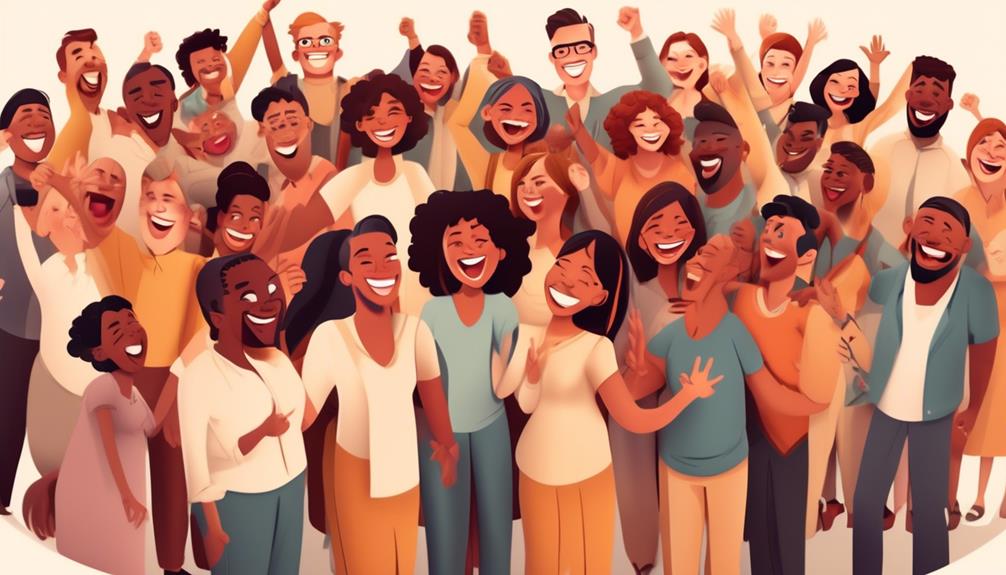Starting conversations about career growth can be intimidating at times, as it requires balancing personal aspirations and organizational objectives. Nevertheless, it is essential to have these discussions in order to actively shape our professional journeys and drive our own development.
In this guide, we'll explore practical strategies and effective communication techniques that can help us initiate and navigate these conversations with confidence and clarity. By mastering these skills, we can better position ourselves for career advancement and fulfillment.
Key Takeaways
- Reflecting on past achievements and learnings is essential for professional growth.
- Defining future career goals requires thorough self-assessment and reflection on achievements and experiences.
- Understanding the organizational landscape helps align career goals with the organization's priorities.
- Researching and preparing the business case is crucial in showcasing the value of advancing into a new role within the organization.
Reflecting on Past Achievements and Learnings
As we often underestimate the value of reflecting on our past achievements and learnings, it's crucial to acknowledge the impact they've had on our professional growth. Taking the time to reflect on our career journey can help us identify pivotal moments that have contributed to our development. It's a strategic conversation to have, as it allows us to ask ourselves what we've learned from past opportunities and how those learnings have shaped our career. Reflection isn't merely about reminiscing; it's about drawing insights that can guide our future endeavors.
When we reflect on our past achievements, we gain a deeper understanding of the skills and strengths we've developed along the way. These insights can be instrumental in setting future career goals and charting a path for our professional development. By recognizing the impact of our past accomplishments, we can leverage them as a foundation for our career growth. This conversation with ourselves is an insightful process that paves the way for continuous improvement and mastery in our career journey.
Defining Future Career Goals

Reflecting on our skills, talents, and experiences is essential in defining our future career goals. As we engage in a career development discussion, it's important to have a clear vision of our long-term career goals and the necessary development goals to achieve them.
Here are some key steps to consider in defining our future career goals:
- Self-assessment: Complete a thorough self-assessment to determine our strengths and areas for development crucial for shaping our potential career. This will provide valuable insights into the skills we need to hone and the areas we need to focus on for growth.
- Reflect on achievements: Reflect on our experiences and achievements in our current role to identify patterns and areas of interest that can shape our long-term career goals. This reflection can help us recognize our passions and areas where we excel.
- Create an action plan: Develop a detailed development plan outlining the steps needed to achieve our career aspirations. This plan should include specific development opportunities, timelines, and milestones to track our progress effectively.
Understanding Organizational Landscape
Understanding the organizational landscape allows us to align our career goals with the organization's priorities and navigate the current situation and trends within our industry. By familiarizing ourselves with the organization's current situation, we can better grasp its growth, threats, and level of disruption and change. Identifying important activities and trends in our organization and industry provides valuable insights for tailoring our career conversation to align with the organization's priorities. This strategic approach demonstrates our commitment to the organization while honing our abilities.
When engaging in career conversations with our managers, it's essential to incorporate an understanding of the organizational landscape. This includes considering the organization's performance review processes, development activities, and our development needs. By aligning our career goals with the organization's priorities, we show that we aren't only focused on our own career advancement but also dedicated to contributing to the organization's success.
Additionally, understanding the organizational landscape enables us to explore potential career paths within the organization and industry, facilitating a great career conversation with our managers and supporting our career progression.
Researching and Preparing the Business Case

To develop a compelling case for career progression, it's crucial to thoroughly research and prepare a business proposal that showcases the value of advancing into a new role within the organization. When preparing the business case, consider the following strategic steps:
- Understand Organizational Trends: Research the organization's current situation and industry trends to align your proposal with the company's priorities and future direction.
- Highlight Skills and Value: Clearly articulate how your skills and experience will bring value to the new role and help achieve the organization's objectives.
- Gather Supporting Metrics: Research the average salaries for the new position and gather metrics demonstrating your past success and potential impact in the new role.
Anticipating and Handling Questions
As we engage in career conversations, it is essential to proactively anticipate and skillfully address the types of questions our managers may pose. Anticipating and handling questions during career discussions is crucial for a productive and insightful conversation. By preparing ahead and considering possible questions, we can demonstrate our readiness to engage in meaningful dialogue about our career growth and development.
| Types of Questions | Description | Example |
|---|---|---|
| Career Aspirations and Goals | Questions about your long-term career vision and how it aligns with the organization's objectives. | "Where do you see yourself in the next 5 years, and how does it tie in with the company's strategic goals?" |
| Strengths and Areas for Development | Expect inquiries about your strengths and areas where you aim to grow and develop. | "What do you consider to be your key strengths, and where do you see opportunities for further development?" |
| Contributions and Achievements | Be ready for questions about your contributions and achievements in your current role. | "Can you share specific examples of projects where you've made a significant impact?" |
Being prepared to address these discussion questions will enable us to have a constructive dialogue with our managers, ultimately leading to the identification of growth opportunities that align with our career goals.
Frequently Asked Questions
How Do You Start a Career Conversation?
We start a career conversation by reflecting on our skills and achievements, identifying areas for development, and aligning our goals with the organization's priorities. We highlight our skills and how they benefit the organization.
How Do You Structure a Development Conversation?
We structure a development conversation by setting clear objectives, discussing strengths and areas for growth, and creating an action plan. We actively listen, provide constructive feedback, and offer support to ensure meaningful progress and career advancement.
How Do You Prepare for a Growth Talk?
We prepare for growth talks by meticulously examining our strengths and development areas. We track achievements in a career journal, taking note of every step forward. This thorough approach ensures we're ready to have meaningful and impactful discussions.
What Are the 5 Steps of Career Development?
We identify our skills, reflect on achievements, research organizational trends, create a business case, and have a successful career development talk. These steps align our goals with the organization's priorities and pave the way for growth.
Conclusion
In conclusion, initiating career growth conversations can pave the way for meaningful progress and development.
By reflecting on our past achievements, defining our future goals, and understanding the organizational landscape, we can create a compelling business case for our advancement.
Anticipating and handling questions with confidence will further aid in this process.
Embracing these conversations as opportunities for growth will undoubtedly lead to a richer and more fulfilling career journey.
Joy, as our Editor in Chief, ensures the highest standard of content. Her talent in writing is complemented by her attention to detail and passion for literature and culture. Joy’s expertise and love for the English language shine through in her editorial work, making each piece a testament to quality and clarity.










